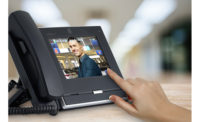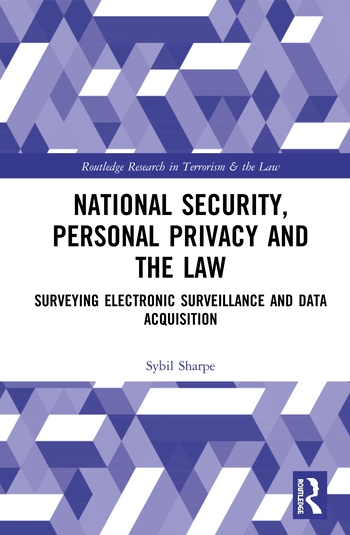Ask most security installers what the most time-consuming aspect of a job is and they will likely put pulling wire and cable at the top of the list. Knowing exactly which product to select, how to meet code, and how to make the installation go as fast and smooth as possible can make or break the whole process.
Cost vs. Value
Whether the cable required for an installation is the same type they have used for years, or a newer category cable, the first consideration for dealers and installers is usually cost.
“From a manufacturer perspective, cost today is very heavily weighted towards materials vs. labor, while at the installer level, labor is the biggest component,” says David O’Keefe, director of security sales for the western region, Communications Supply Corporation, a division of WESCO Distribution Inc., Carol Stream, Ill. “Copper and insulating and jacketing compounds, which are petroleum-based, have gone up significantly. Before, the manufacturers could find ways to be more efficient on the labor side and squeeze some cost out of the finished goods.” Now that is not as easily done.
Deane Myers, regional sales manager, Coleman Cable Inc., Waukegan, Ill., points to a disturbing trend in the market. “Most reputable manufacturers of wire and cable follow standards and guidelines set by the National Electric Code (NEC) and other independent testing laboratories like UL. We all make our products to spec to function the correct way. When prices are raised due to materials cost, they are generally raised across the board equally among all manufacturers. But some offshore companies are taking materials out of their product in order to shave cost. A gauge size or wall thickness may not be what it is supposed to be. It looks like, tastes like, but doesn’t actually meet the standard.”
In other words, if the price is too good, there is usually a reason. And that reason will not save money in the long run.
“Often the person purchasing the cable is not the person installing it,” Myers adds. “They may not realize that the price of the product is not always the same thing as the cost of it.
“If you are paying an installer X amount and you budgeted 10 hours for the install, but it takes 12 because the product is harder to strip or pull, you will lose money in the long run,” he cautions. “That is what people miss. They will save $10 on a box of wire at the cost of losing $20 on the installation,” Myers explains.
Control
So if not in the cost of the product, how can dealers and integrators save cost on wiring and cable? By controlling the installation of that product using the most efficient tools and time saving products available.
Communications Supply Corporation, a division of WESCO Distribution Inc., for example, offers a wire package solution called Reel Simple, a spool within a box that, in conjunction with a specially designed cart, allows the installer to stack the boxes with the feeding nipples all pointing in the same direction, making pulling more efficient. The product also features a breaking system with adjustable tension.
“Labor cost is always difficult to improve, but packaging like this is one way,” O’Keefe says.
Other products are designed for specific types of installations, such as composite cable for access control. This product takes the cables typically needed for the request to exit button, mag lock, reader and door contacts and consolidates them so there is only one cable run the installer needs to do.
“Solutions such as these can make a big impact,” O’Keefe says.
“We are always researching new compounds for installation and jackets that are not only flexible but have good tensile strength,” Myers says. “The easier to strip and pull but also strong is what you want. We have boxes that resist tangling even after they have been handled a lot. All of that is a big labor saver on the job. The desire is for real, conforming product that is easy to install, easy to terminate, pays out and feeds well. Get that and you will save money on the job. Don’t get caught up in the price game.”
On the video side, category cable comes with a whole new set of rules and guidelines that can hinder the security installer.
“For 25-30 years, everyone has been using coax cable to connect to the analog camera,” says Chad Szekeres, national sales manager, Nitek, Rolling Meadows, Ill. “But when you are transitioning from analog to IP video, the hurdle is that you have an infrastructure designed for one technology but the newer technology is much more limited on distance, speed and power.”
For instance, the industry standard for coax cable runs is 550 feet. Category cable is 295 feet, Szekeres explains.
Manufacturers have stepped up with products that allow installers to use the existing coax cable in conjunction with a “converter box,” similar to the TV cable box.
“Our system allows you to migrate towards IP technology using traditional infrastructure, cabling and additional hardware,” Szekeres says.
“Our new eBridge IP over coax adapters allows the transmission of IP data over coax cable,” says Ronnie Pennington, national accounts manager, Altronix Corporation, Brooklyn, N.Y. “They enable installers to upgrade to an analog system with IP cameras and edge devices without the need for new cabling and benefit installers by reducing both labor and material costs. They can allow data transmission over 2,000 feet without using repeaters, which is more than five times the distance capabilities of structured cable.”
Search “eBridge” at sdmmag.com for a full article on the adapter.
Compliance
Category cable isn’t the only one with standards and codes attached to it. All cable has certain limitations and installation guidelines, whether it is official code or just good standards practice. Knowing what these are and installing to them can not only save money in the long run, it can also be a sales tool.
“The NEC tells specifically which applications, spaces, where to install,” Myers says. “All the guys who have standards say you are supposed to use approved products and all installations should be tested. What installers may not understand is that is part of your sales pitch. If you have 10 people bidding on installation, what better way to stand out than to put in the bid that all products will be tested?”
These tests and guidelines can run the gamut from voltage and continuity to the more stringent category cable standards, which come from the IT world.
“Category cabling to support IP solutions comes with a long history of manufacturing standards and installation assurances driven by standards and testing requirements,” O’Keefe says. “There are very specific requirements, such as you can’t pull more than 90 meters, and can only strip the jacket back a half inch. Some installers have a ‘plug-it-in-and-if-I-have-a-good-picture-I-am-good-to-go’ mentality.”
That is short-term thinking, O’Keefe says. While a cabling installation that is not done to standard may work today, it can be cause for concern down the road as the end user goes to higher resolution and bandwidth products. Whether the installing dealer does the work themself or contracts to have it done, there should be written test and certifications produced that prove it was done according to standard.
“Standards are there to ensure lifelong performance,” O’Keefe says. “If you are going to put in category cables that are designed to run cameras, they should be put in correctly.”
Other cables also have recommended installation practices that are important to follow.
“Low voltage cable should be pulled at no more than 25 pounds pulling pressure, which is not that much,” Myers says. “Use proper pathways, don’t overfill and don’t pull cable over sharp objects or through a lot of tight bends, as best as possible.”
Constantine adds: “There are different ways of pulling cable through tight spaces. The most important thing for the installer is to make sure he doesn’t snag or nick the wire and that the bend radius is correct.”
Using proper tools is another basic, but equally important step, Myers says. “Always use proper tools. The NEC exists to prevent against fire initiation and electric shock. If you keep that in your brain you are really going to help yourself. Ask ‘Am I following the best practices laid out by NEC code?’ This not only promotes safety but will speed up your installation. It is all about the proper pathways, pulling pressure and following the rules.”
And test, test, test.
“One of the things we encourage is to make sure that every install is put onto a test meter to measure the continuation ratings and bend radiuses,” says Ed Constantine, senior product manager North America for wire, network systems, tools and hardware, ADI, Melville, N.Y. “We recommend to our installers that they always test cable to make sure they have connected it right.”
Power Talk |
|
When it comes to connecting and running a security or fire system, wire and cable are only half the equation. The other half is powering the system. “On the alarm side, people are still mostly doing traditional AC or DC power at the panel and maybe a DC power supply for analog cameras,” says David O’Keefe of Communications Supply Corporation, a division of WESCO Distribution Inc.. Gene Pecora, director, customer marketing, Honeywell Fire Systems, Northford, Conn., says a big trend is larger power supplies, with more devices on a security system. “Power supplies used to have a circuit board that generated not quite an amp of power. You would put them everywhere. Today the most common are in the 3 amp range. Over a 20-year-time frame the supply size has tripled to power the larger systems people are putting in now,” Pecora says. Pecora also sees more diagnostics becoming standard for power supplies. “It is pretty common to have an AC light to show that AC is present and a DC to show that it is going out and the supply is in good shape. Our latest supplies have five lights, including one to monitor battery polarity and an overload light.” Increasingly, power over Ethernet (PoE) is used on most IP cameras as well as some access control edge devices, and brings with it a different set of trends and issues. “In the analog world you had to have a power supply that plugged into electric and was wired to the panel,” says Chad Szekeres, national sales manager, Nitek, Rolling Meadows, Ill. “In the IP world, Cat 5 supplies video and power. That is a big, big change in how to do things.” Pecora adds: “PoE takes four previously unused wires in a Cat 5 cable and repurposes them for power. The installer can run one Cat 5 cable and get data and power in one bundle instead of having to run two separate wires.” However, distance and power become issues when you start working with Cat 5 and PoE. “There are devices where cameras have heaters and blowers consuming more power than what the standard PoE allows for,” Szekeres says. “People are looking at inserters or injectors to put at the camera location to generate power. With traditional security cameras, they were all routed to the power supply within the building. Under PoE, with the high draw of outdoor cameras, they need high levels of PoE, which are outside the network standard. “PoE also doesn’t always lend itself to battery backup. In a traditional system you have a multi-channel power supply and all devices are battery backed up together. In IP, PoE devices can’t produce enough power for outdoor cameras because of the distance they have to carry that power over a long cable run. So if you put a device on a pole, you can’t put a battery backup on a pole,” Szekeres explains.
Battery BackupWhere battery backups are possible and/or necessary, however, there are some things to keep in mind. “Security and fire protection systems are normally powered by the local power utility as their primary power source,” says Kevin Handerson, marketing director, Middle Atlantic Products, Fairfield, N.J. “A secondary power supply is required by national fire codes for fire protection systems and often require 24 hours or more of operation. For a security system the secondary power supply may be required by the owner, operator or insurance company. “Battery backup systems, in the form of UPSs, are an ideal choice for cost effective secondary power. They are far easier to install than gas or diesel powered generators because they do not require any sound control, exhaust or similar complexities. There are also models available today that are designed to allow for much longer run times. For example, we offer UPS that can have up to 10 additional batteries be connected in a ‘daisy-chained’ fashion, providing much longer run times in the event of a power outage,” Handerson says. These important backup sources of power can also represent a revenue opportunity for dealers and integrators, Pecora adds. “This is an opportunity that may not always be obvious. Back-up power supplies have batteries that have a finite life. Doing a simple check of the batteries during a routine service call can identify an immediate need for them to be replaced,” Pecora says. Battery testing equipment can be used, but the dealer can also just hook up the backup power supply and see how long it will hold up on the battery. “If you have a bad battery it won’t hold up long at all, and the system is put on check when it is being serviced, so there is no extra danger or inconvenience associated with checking batteries at the same time,” Pecora explains. |









